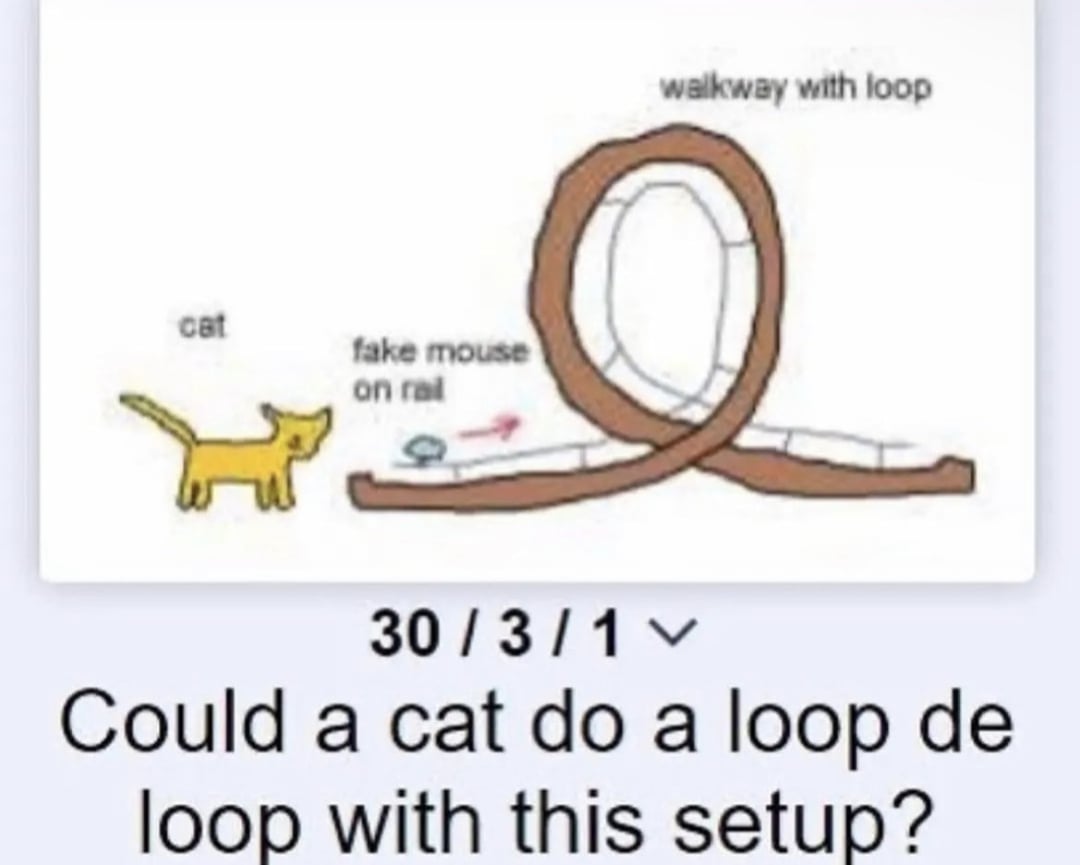this post was submitted on 15 Oct 2023
420 points (97.7% liked)
Memes
45776 readers
2098 users here now
Rules:
- Be civil and nice.
- Try not to excessively repost, as a rule of thumb, wait at least 2 months to do it if you have to.
founded 5 years ago
MODERATORS
you are viewing a single comment's thread
view the rest of the comments
view the rest of the comments

The cat is moving in a circle, so it has a centripetal acceleration and a centripetal force. At the apex of the loop, that force is the sum of gravity, and resistance from the track. The track force is greater than or equal to zero, so acceleration due to gravity is less than or equal to the total centripetal acceleration.
g ≤ v²/r
So,
r ≤ v²/g
Taking top speed of a cat as 8.278m/s (from Wolfram Alpha), and g on earth as 9.81m/s², this gives us r ≤ 6.99m. So long as the cat can maintain its top speed all around the loop, it can successfully do a loop of up to 14 meters diameter. This is a lot bigger than I expected, to the extent that I suspect some flaw in my reasoning.
The cat won't be able to maintain its top speed because of deceleration from lack of friction
Claws homie
Good point. It has zero contact force at the apex, so 14m is an upper bound on possible cat-loops.
True. But if top speed allows for 14 meters, surely a 1.5 to 2 m loop should be possible (especially given a cat's incredible reflexes and control given a lack of friction or even freefall). I'd guess that a cat, given enough motivation, could keep running under the little friction provided by the centripetal force for a few hundred milliseconds - likely long enough to complete a 1m loop, maybe even 2, given sufficient space for a top-speed run before entering...